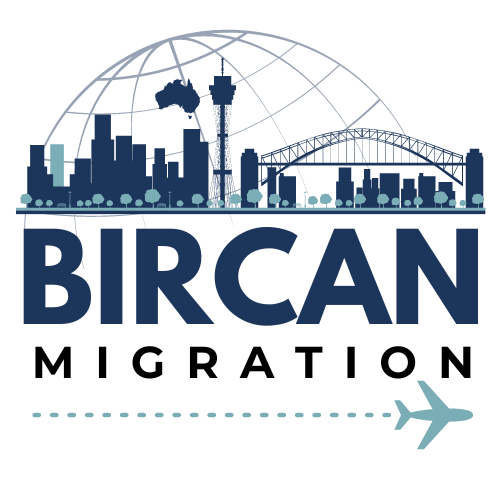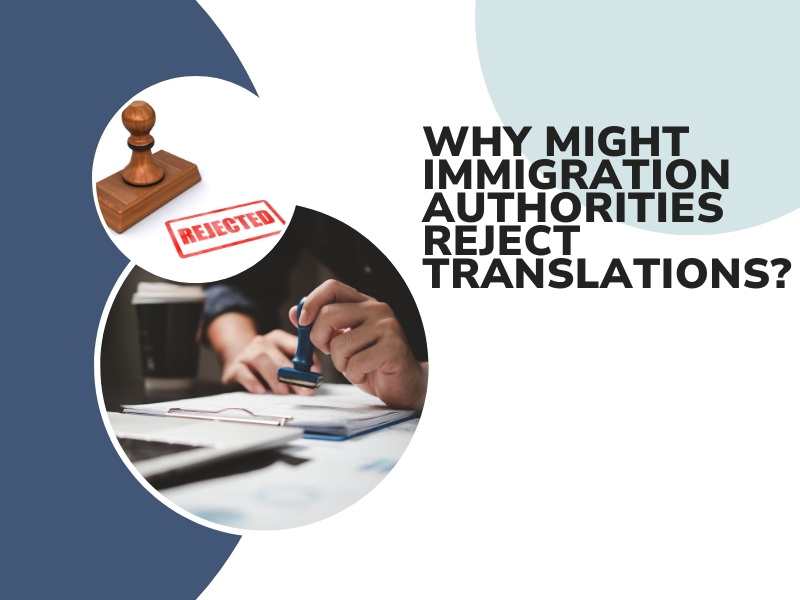Navigating the complexities of immigration can be challenging, especially regarding required documentation. A critical aspect is ensuring translations are accurate and accepted. A rejected translation can significantly hinder the application process, leading to delays and frustrations. This article explores why immigration authorities might reject translations and how to avoid these pitfalls, ensuring a smoother path to obtaining an Australian visa or citizenship.
What is a rejected translation, and why is it significant for immigration applications?
A rejected translation refers to any translated document that immigration authorities deem unsatisfactory or incorrect. This rejection can stem from various factors, such as inaccuracies, formatting issues, or missing information. Understanding the significance of this rejection is crucial. If a translation is not accepted, it may result in:
- Delays in processing the application.
- Additional requests for documents add to the stress of the applicant.
- A potential negative impact on visa or citizenship outcomes.
What common errors lead to a rejected translation?
Several common errors can lead to translation rejection by immigration authorities:
- Inaccurate translations: Misinterpretations can alter the meaning of documents.
- Spelling and grammatical mistakes: Errors can give an impression of carelessness.
- Incorrect terminology: Using the right words or phrases can lead to clarity.
- Omissions: Missing key details can result in incomplete information.
- Mistranslations: Words or phrases that must be correctly translated can misrepresent information.
Being aware of these errors can help applicants take the necessary steps to avoid them.
Why is accuracy crucial to avoid a rejected translation?
Accuracy is paramount when translating documents for immigration purposes. Here are several reasons why:
- Legal implications: Incorrect translations can lead to misinterpretations of legal status.
- Compliance: Immigration authorities require precise translations to ensure compliance with regulations.
- Assessment of credibility: Inaccuracies can cast doubt on the authenticity of documents.
- Decision-making: Immigration officials rely on accurate translations to make informed application decisions.

Ensuring accuracy in translations is essential for maintaining the integrity of the application and that your translations meet immigration standards for Australian visa applications.
How can formatting errors affect translated documents?
Formatting errors can also lead to the rejection of translations. These errors may include:
- Inconsistent layouts: Changes in formatting from the original document can raise red flags.
- Improper alignment: Misalignment can create confusion about the information presented.
- Incorrect file types: Submitting documents in non-acceptable formats can lead to rejection.
- Lack of required stamps or signatures: Missing official seals can undermine the document’s validity.
Proper formatting ensures that translations present a professional image and comply with the requirements set by immigration authorities.
What role do certified translators play in preventing rejected translations?
Certified translators are crucial in ensuring that documents meet immigration standards. Here’s how they help:
- Expertise: They understand the specific requirements of immigration authorities.
- Attention to detail: Certified translators are trained to spot potential translation issues.
- Legal assurance: Their certifications lend credibility to translated documents.
- Understanding of terminology: They are familiar with industry-specific language, ensuring accuracy.
For eligible people, utilising the free translation services offered in Australia can be valuable. However, it’s essential to ensure that the quality of the translations meets the immigration requirements. Using a certified translator remains reliable for ensuring accuracy and avoiding rejection.
What common mistakes lead to translation rejections?
In addition to the previously mentioned errors, other common mistakes include:
- Failure to translate all content: Omitting parts of a document can lead to rejection.
- Inconsistent terminology: Using different terms for the same concept can confuse authorities.
- Using informal language: This can undermine the professionalism of documents.
- Ignoring local nuances: Not adapting translations to the local context can lead to misunderstandings.

Why should completeness be checked to avoid a rejected translation?
Ensuring translations are complete is vital for several reasons:
- Holistic view: Incomplete translations can misinterpret the applicant’s situation.
- Avoiding unnecessary delays: Missing information may require follow-up queries, slowing the application process.
- Enhanced credibility: Complete translations demonstrate professionalism and thoroughness.
- Minimising complications: A comprehensive document helps prevent complications during the application review.
Verifying that translations include all necessary information is essential.
How can cultural nuances impact a rejected translation?
Cultural nuances play a significant role in translation and can impact how information is perceived and understood. Here’s why they matter:
- Contextual meaning: Certain phrases may have different meanings based on cultural context.
- Local customs: Understanding local customs can prevent misinterpretations.
- Expectations: Different cultures have varying expectations regarding communication styles.
Awareness of these nuances can help create translations that resonate appropriately with immigration authorities.
What steps can be taken to ensure translations are accepted?
To ensure translations are accepted, consider the following steps:
- Use certified translators: Their expertise can significantly reduce errors.
- Proofread documents: Always check for accuracy and completeness before submission.
- Follow formatting guidelines: Ensure documents adhere to specified formats.
- Request feedback: Seek input from knowledgeable sources to catch potential issues.
- Stay informed: Keep up to date with any changes in immigration regulations that may affect translations.
These proactive steps can enhance the quality of translations and ensure that the translated documents meet eligibility requirements for a smooth immigration journey.
Why is it important to use professional translation services?
Utilising professional translation services offers numerous benefits:
- Expertise and experience: Professionals understand the intricacies of immigration requirements.
- Quality assurance: They have systems in place to ensure accuracy and consistency.
- Time-saving: Professionals can complete translations more quickly, reducing delays.
- Stress reduction: Relying on experts allows applicants to focus on other aspects of their application.
Investing in professional translation services is a wise decision for a successful immigration journey.
Your pathway to successful immigration starts with accurate translations.
Navigating the immigration process can be daunting, but understanding the importance of accurate translations can make a significant difference. By avoiding common errors, ensuring completeness, and using professional translation services, applicants can prevent rejected translations and increase their chances of success. Investing in high-quality translations is an essential step that can pave the way for a smoother application experience and significantly enhance the likelihood of achieving the desired visa outcome.
If assistance is needed with the immigration journey, individuals should consider contacting Bircan Migration. With over 20 years of experience, Kenan Bircan and his team are ready to provide personalised guidance to help navigate the complexities of visas, citizenship, and AAT appeals. Contact Bircan Migration to schedule a free consultation today to kickstart the journey toward a new life in Australia.


